Subsystem Testing Continued
Storage Configuration & Testing
For our testing, the operating system is always installed on a Samsung 970 EVO NVMe Plus-based SSD. A second, identical drive is employed for testing RAID0 performance on motherboards that support this functionality natively without PCIe adapter kits. In cases where this is necessary, an alternative is used as the OS drive. It is either an Intel SSD 750 via U.2 to PCIe adapter or a SATA-based Samsung 840 Pro.
For all non-RAID, M.2 performance testing, we used a Corsair MP600 2TB PCIe 4.0 NVMe drive provided by Corsair and AMD. On AMD chipset-based motherboards, this drive is always installed in the M.2 slot which connects directly to the CPU’s PCIe controller. On Intel systems, this drive is attached to PCIe lanes which are provided by the PCH.
SATA & NVMe
The storage configuration of the ASRock X570 PG Velocita is rather simple. The motherboard has 8x SATA 6.0Gb/s and two M.2 slots. The RAID implementation supports RAID 0, 1, and 10. The primary M.2 slot which gets its lanes from the CPU supports type 2280 (80mm) devices. It supports PCIe/NVMe SSD’s but not SATA-type devices. However, the second 2280 (80mm) slot does support both PCIe/NVMe and SATA type SSDs.
At no point did I have any issues relating to storage on the ASRock X570 PG Velocita. That is to say, I had no trouble configuring anything for testing.
USB Ports
- 1 x USB 3.2 Gen2 Type-A Port (10 Gb/s) (Supports ESD Protection)
- 1 x USB 3.2 Gen2 Type-C Port (10 Gb/s) (Supports ESD Protection)
- 6 x USB 3.2 Gen1 Ports (Supports ESD Protection)
- 2 x USB 2.0 Headers (Support 4 USB 2.0 ports) (Supports ESD Protection)
- 2 x USB 3.2 Gen1 Headers (Support 4 USB 3.2 Gen1 ports) (Supports ESD Protection)
The configuration of the ASRock X570 PG Velocita is precisely what I would expect from a motherboard at this price point and with this chipset. It is of course possible to add more ports either by additional controllers or via internal USB hubs. However, these come at a cost.
Network Subsystem Testing
Testing Methodology (Wired)
LAN Speed Test software was used with the Windows Task Manager to determine the performance levels of the onboard network interface. LAN Speed Test was used to measure bandwidth and transfer speeds, while Windows Task Manager monitored CPU utilization on the test system. For the testing, an 800MB file test was used with the default packet configuration for the application.
The test was run three times with the middle result chosen. Results were captured for the low, medium, and high transfer rates. The test was performed using a plenum-rated category 6e crossover cable to bypass any traffic, routing, or other transfer issues and possible packet loss or corruption that can be caused by a router/switch or hub. The cables were connected between two test machines, one using the onboard NIC(s) of the board being reviewed and the other is a Killer E3000 2.5GbE adapter built into the MSI MEG X570 GODLIKE motherboard. In cases where greater speeds are required, I use the Aquantia AQtion 10Gbit adapter that’s bundled with the same MSI motherboard.
Testing Methodology (Wireless)
The same software and protocols are observed for wireless networking as well. However, due to the issues of sometimes creating Ad Hoc networks, I test using the wireless router provided by my ISP. This, while not indicative of maximum speeds attainable by these controllers, does indicate a more typical setup. The test was run three times with the middle result chosen. Results were captured for the low, medium, and high transfer rates. Unfortunately, I do not yet have WiFi 6 infrastructure available for testing, so these results are more of a function than a speed test.
Wired Networking Tests – Killer E3100G
The ASRock X570 PG Velocita uses a single 2.5GbE Killer E3100G wired network controller supporting the following features and specifications as taken from the ASRock website:
- 2.5 Gigabit LAN 10/100/1000/2500 Mb/s
- 1 x Killer E3100G (PCI-E x1 Gigabit LAN 10/100/1000/2500 Mb/s)
- Supports Killer LAN Software
- Supports Killer DoubleShotTM Pro
- Supports Wake-On-LAN
- Supports Lightning/ESD Protection
- Supports Energy Efficient Ethernet 802.3az
- Supports PXE

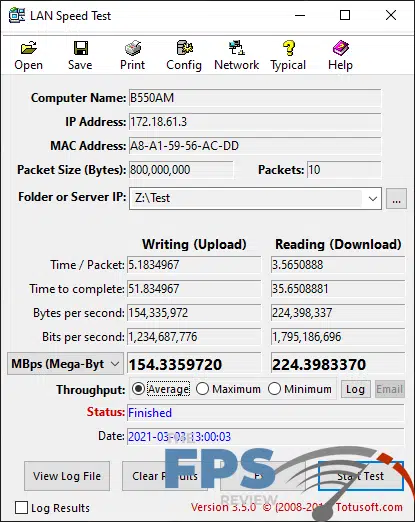
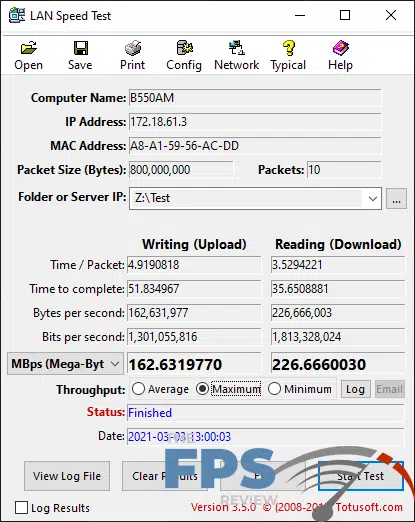
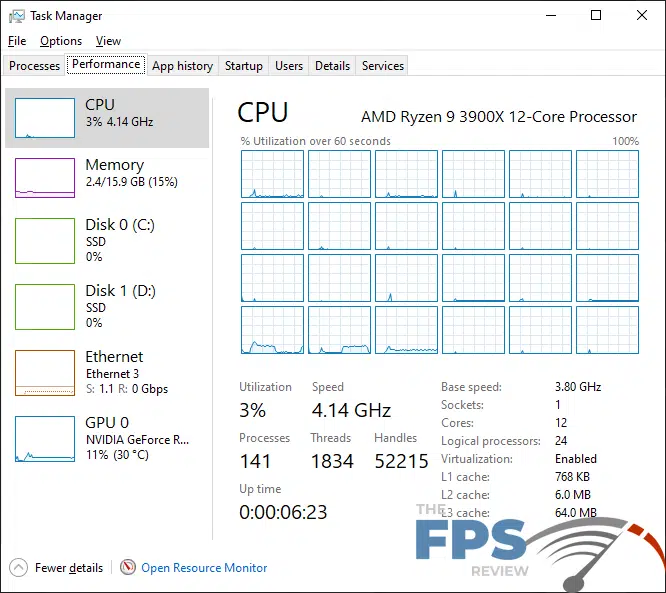

In the write or upload test, our minimum transfer rate was 146.92MB/s. For the read or download test, we saw a minimum of 223.08MB/s. Our averages for each test weren’t much different coming in at 154.33MB/s in the write test and 224.39MB/s in the read test. In a testament to consistency, the maximum transfer rates weren’t all that much greater than the averages or minimums either. These came in at 162.63MB/s in the write test and 226.66MB/s in the read or download test.
CPU utilization came in at 3% in the write test and 2% in the download test. These numbers are about what we would have expected for this type of solution.
Wireless Networking Tests – Killer AX1650x WiFi Module
The ASRock X570 PG Velocita utilizes a Killer AX1650x 802.11AX WiFi module for its wireless solution. Here are the specifications as listed on the ASRock website:
- Killer AX1650x 802.11ax WiFi Module
- Supports IEEE 802.11a/b/g/n/ax
- Supports Dual-Band (2.4/5 GHz)
- Supports Killer WiFi6 802.11ax (2.4Gbps)
- 2 antennas to support 2 (Transmit) x 2 (Receive) diversity technology
- Supports Bluetooth 5.1 + High-speed class II
- Supports MU-MIMO
- Supports Killer LAN Software
- Supports Killer DoubleShotTM Pro
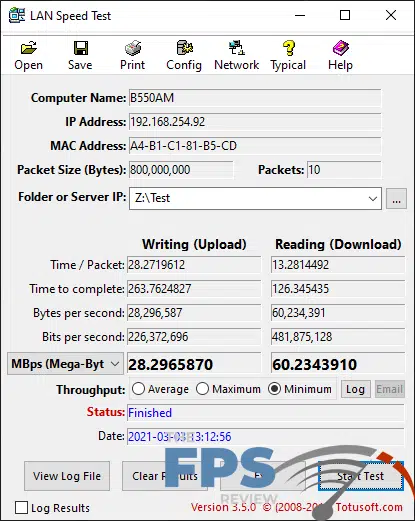

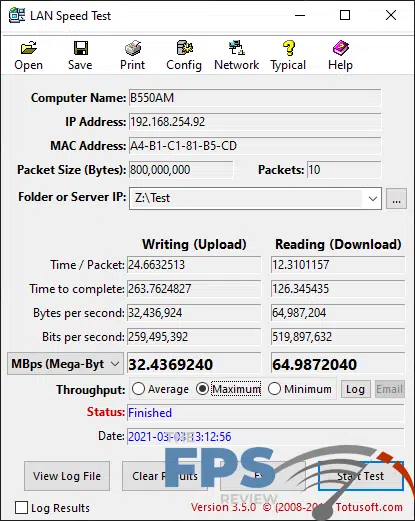


Our minimum transfer rates were 28.2MB/s in the write test and 60.23MB/s in the download test. Our averages were 30.33MB/s and 63.31MB/s in the write and read tests respectively. Maximum transfer speeds climbed slightly to 32.43MB/s and 64.98MB/s write and read. CPU utilization hovered around 1% in both read and write tests.
Overall, this is a good solution and generally speaking, I’ve found the Killer wireless to be faster than the Intel’s usually are. For me, they’ve worked just as well while Realtek and everything else have been pretty rough to work with comparatively.
